Great Design Plant: Eupatorium Maculatum
http://decor-ideas.org 11/13/2014 01:14 Decor Ideas
I don’t remember how I got hooked on Spotted Joe Pye Weed (Eupatorium maculatum) — maybe a friend hustled it to me at a bar or I gave in to peer pressure at some party. I know I’m not the only one who’s found this plant and its cousins charming and addictive. It looks good in any season, brings in butterflies, helps native bees over winter and is fairly adaptable to site conditions. This U.S. native isn’t used as much as it should be, so let’s change that.
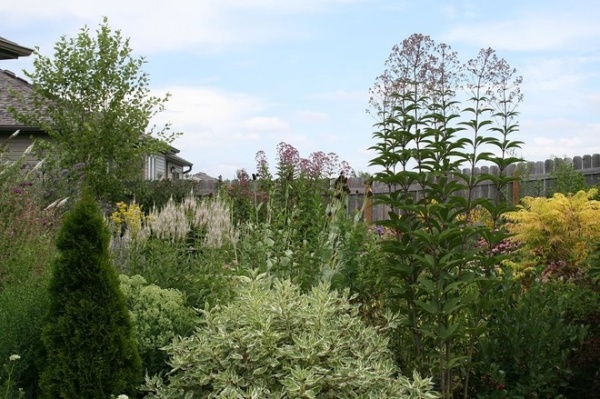
Botanical name: Eupatorium maculatum
Common name: Spotted Joe Pye Weed
Origin: U.S. native from the Rocky Mountains and the Southwest (New Mexico, Arizona, Utah, Colorado, Wyoming) east into Nebraska, the Dakotas, the upper Midwest and New England
Where it will grow: Hardy to -40 degrees Fahrenheit (USDA zones 3 to 8; find your zone)
Water requirement: Boggy, moist to slightly moist soil
Light requirement: Full sun to 25 percent shade
Mature size: 4 to 8 feet tall and 2 to 4 feet wide
Benefits and tolerances: Architectural, slow-spreading clump; butterfly magnet; makes a great bee house
Seasonal interest: Pink flowers in late summer; yellow fall color; superb winter interest; loaded with pollinators
When to plant: Potted or bare-root plants can be planted spring to fall; seed in fall or winter. (The seeds will need cold winter stratification and light to germinate, so scatter them on the soil surface and press them in firmly.)
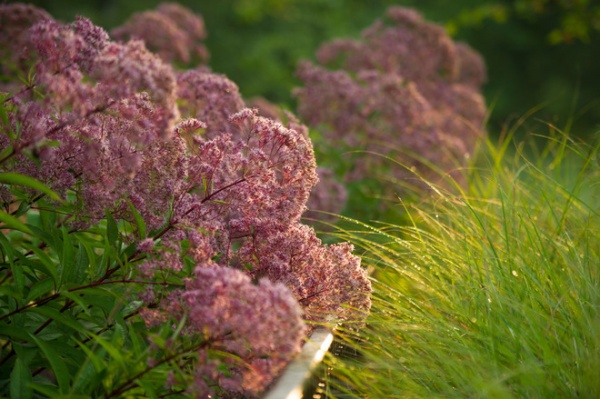
Distinguishing traits. Spotted Joe Pye Weed gets its name from the spotted stems — purple dots on a green background. It differs from Joe Pye Weed (Eupatorium purpureum) in that it prefers wetter soil, gets a bit taller and needs full sun, and its leaves are whorled around the stalks; it also tends to have more flower umbels. It’s a quick grower once June heats up, and in mid to late summer butterflies, bees and all manner of insects gorge on the nectar of this attractive native plant.
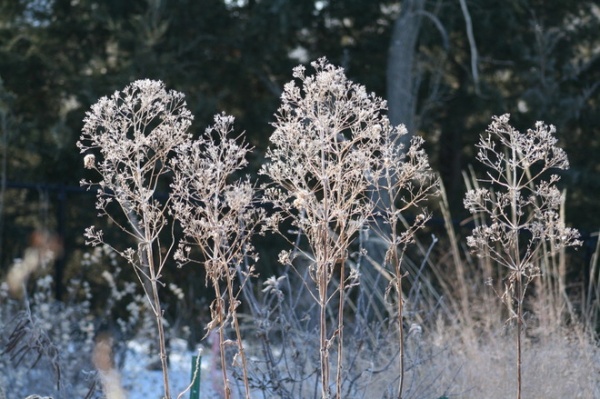
How to use it. It is the perfect height for the back or middle of the border. I like using tall plants in surprising places, like a corner where two paths meet or the middle of a border with lower plants surrounding them. As you can see here, the winter interest is superb, and birds love to perch safely on the tall stems that stand up to wind year-round.
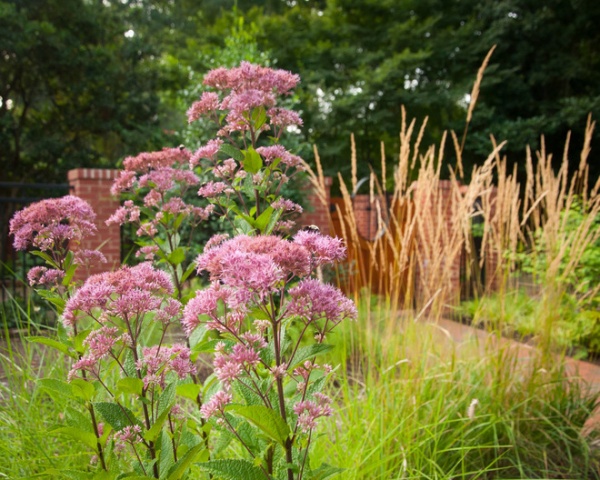
Planting notes. Spotted Joe Pye Weed grows best in boggy or wet to moist soils in full sun, but it’s tolerant of medium soils if the ground is shaded. It prefers well-drained soil but does fine in clay. Plant it near the water’s edge, in low-lying areas or in a rain garden.
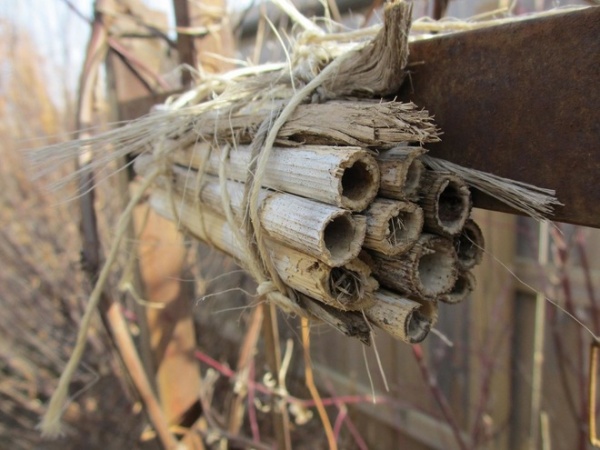
Most Eupatorium stems are hollow, and when you cut down the plants in spring, you’ll often find them packed with native bee larvae or adults (this is why it’s best to hold off until late spring, if you can, to cut down plants). You can make native bee house bundles from the stems and secure them all around the garden.
More: How to Design a Garden for Native Bees
Related Articles Recommended












